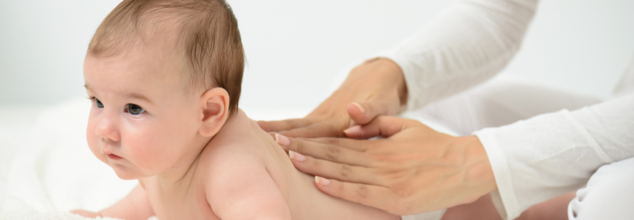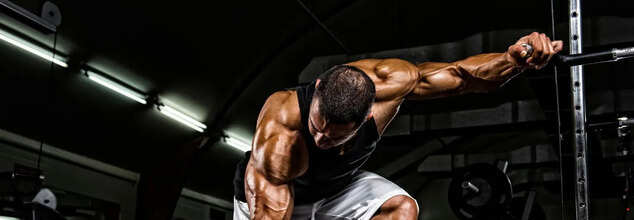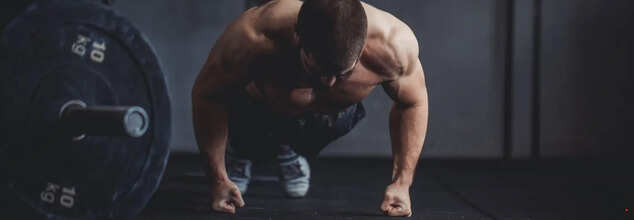
If You Are Struggling To Shed The Last 5 lbs Of Weight, Follow These 3 Expert Tips For 8 Weeks And Watch The Fat Melt
Anybody who has ever been on a weight-loss journey understands the thrill of watching progress on the scale. That progress, however, tends to come to a screeching halt when only a few of those pesky pounds are left. Ironically, losing the last 5 pounds may be harder than losing 50.
Early in your weight loss, basic lifestyle changes—such as substituting sweet drinks for healthier beverages or taking more daily steps—can be quite productive. However, as you near your ideal weight, your body becomes more resistant to weight loss. This is because your body has an intrinsic set range of weight that it will fight to maintain. The thinner you get, the more your body resists letting go of its stores of energy, and therefore weight loss is harder to achieve.
Also, as your weight decreases, so does your basal metabolic rate (BMR)—the amount of calories your body expends at rest. A lighter body needs fewer calories to operate, so the diets and workouts that worked at first may no longer work. Even exercise that once burned a lot of calories now provides decreasing returns.
If you find yourself stuck on this plateau, don't panic. You've already done the toughest part. It's time now to make small, expert-recommended tweaks that can finally bring you over the finish line.
3 Things That You Can Help You Lose Weight
It's simple to write off a paltry 5 pounds as nothing, but retaining excess fat—particularly visceral fat—can cause metabolic problems. Visceral fat, the internal belly fat that encases your organs, leads to insulin resistance, fatty liver, and even inflammation of the pancreas. These problems can ultimately cause weight gain in the midsection, tiredness, and even puffiness in the hands, feet, and face.
By shifting your focus from the scale to metabolic health, you’ll not only drop those last few pounds but also improve your overall well-being. The good news? Achieving this requires only three fundamental changes, followed consistently for eight weeks.
1. Optimize Your Sleep Routine
A regular sleep routine is key to long-term weight loss, especially when focused on visceral fat. Your body controls fat storage and metabolism through hormones such as cortisol, leptin, and ghrelin—all of which are directly influenced by the quality of your sleep.
To ensure optimal fat burning, stick to a consistent sleep routine:
- Go to bed and wake up at the same hour each day, including weekends.
- Strive for 7–9 hours of good quality sleep each night.
- Steer clear of blue light from screens at least one hour prior to sleep.
- Cut down on afternoon caffeine consumption to avoid interrupted sleep patterns.
Controlled sleep habits stabilize cortisol levels, which in turn avoids excessive fat storage, especially around the abdominal area.
2. Take a Daily 30–45 Minute Walk in Nature
Exercise is a building block of weight loss, yet not all exercises provide the same metabolic payoff. Rather than boosting your gym time or running on the treadmill, focus on outdoor walking in daylight.
Why? Natural light exposure regulates your circadian rhythm, maximizing cortisol metabolism. This maximizes insulin sensitivity and fat loss. Walking outdoors also promotes mindfulness, which leads to reduced stress—a major source of belly fat.
To add this to your daily routine:
- Take a minimum of 30–45 minutes' walk each day, ideally early morning.
- Select nature trails, parks, or quiet neighborhoods instead of indoor gyms or treadmills.
- Keep your pace consistent but prevent high-intensity spikes, which can cause a surge in cortisol levels.
In just eight weeks, this subtle adjustment can remarkably speed up fat loss and lead to improved hormonal balance.
3. Emphasize High-Satiety Whole Foods
Diet is key to losing those final few pounds, but severe calorie cutting or eliminating entire food groups isn't the answer. Rather, eat whole foods with a high satiety index—foods that fill you up longer and give you the nutrients you need.
Strive for a diet made up of at least 75% whole, minimally processed foods. These are:
- Lean Proteins: Chicken, turkey, fish, eggs, and plant protein sources such as lentils.
- Fiber-Rich Vegetables: Leafy greens, cruciferous vegetables (broccoli, cauliflower), and bell peppers.
- Healthy Fats: Avocados, nuts, seeds, and olive oil.
- Complex Carbohydrates: Quinoa, sweet potatoes, oats, and legumes.
Avoid ultra-processed foods, high sugar, and artificial sweeteners, which interfere with metabolic processes and stimulate cravings.
Do You Really Need to Lose the Last 5 Pounds?
If you’ve followed these strategies and still struggle to shed those last few pounds, it may be time to reassess whether they truly matter. Rather than focusing solely on weight, pay attention to more meaningful health markers like blood pressure, cholesterol levels, and blood sugar.
Moreover, if you’ve incorporated strength training into your fitness routine, your scale weight may stay the same—or even increase—due to muscle gain. Muscle is denser than fat, so a leaner, stronger body may not always reflect a lower number on the scale.
If achieving the last 5 pounds necessitates drastic limitations or unhealthy behaviors, it is perhaps more worthwhile to redirect your energy toward embracing a balanced, healthy lifestyle instead of fixating on a random number. Ultimately, health is about more than what the scale reads—it's about feeling strong, energized, and confident in your body.
The last leg of your weight-loss journey calls for strategic, thoughtful adjustments and not drastic action. By setting a regular sleep pattern, adopting outdoor activity, and focusing on whole, nutrient-rich foods, you can now overcome your plateau and achieve your healthiest state.
Stick to these proven-by-experts strategies for a mere eight weeks, and you might discover not only does the fat disappear but your overall well-being and health improve dramatically as a bonus.

(Credit-Canva)
Low Birth Weight Babies Are At Risk For This Eye Condition
Newborn babies require a lot of care, and many times even the parents can be unaware of certain conditions that may be causing them issues even at birth. One such condition which is much more prominent in premature babies with low birth weight is Retinopathy of Prematurity (ROP).
According to American Academy of Ophthalmology, when a baby is born this can lead to a problem called ROP. In ROP, the tiny blood vessels in the back of the eye, called the retina, start to grow in a strange way. These blood vessels are supposed to help the eye see, but when they grow wrong, they can cause big problems. Sometimes, they leak or bleed, which can lead to scarring inside the eye. If this gets really bad, the baby could lose his/her eyesight.
How ROP Affects the Eyes
Normally, the back of the eye, the retina, is like a screen that sends pictures to the brain. But for babies with ROP, the blood vessels that feed the retina don't grow right. They might leak or bleed, and this causes scars to form. These scars can shrink and pull on the retina, like pulling a sticker off a wall. This is called a retinal detachment. If the retina comes away from the back of the eye, the baby can't see properly. In really bad cases, this can lead to blindness. Doctors try to stop this from happening by treating the blood vessels before they cause too much damage.
A baby's eyes are still growing inside the mother's womb. The blood vessels in the retina start growing early and finish after the baby is born. If a baby is born too soon, these blood vessels might not have finished growing, and they can grow in a bad way. Babies born before 31 weeks, or those who are very small at birth (less than 1500 grams), have the highest risk of ROP. ROP doesn't have any signs that you can see at first. The only way to know if a baby has it is for a special eye doctor, called an ophthalmologist, to look inside their eyes.
What Are The Treatment Options For ROP?
There are times when the ROP is mild and gets better on its own. But if it's severe, doctors need to do surgery to stop the bad blood vessels from growing and save the baby's eyesight. The surgery focuses on the sides of the retina, so the baby can still see straight ahead. There are a few kinds of surgery. Laser surgery uses small beams of light to stop the blood vessels. Injections put medicine inside the eye to help them grow normally. For very bad cases, doctors might use a band around the eye or replace the gel inside the eye.
The main goal of ROP surgery is to stop the problem from getting worse and prevent blindness. Doctors are usually successful, but some babies might still have some vision loss. Even if the ROP stops, kids who had it need to get their eyes checked every year, even when they're grown up. This is because they might have other eye problems later in life. It's important to keep going to the eye doctor to make sure their eyes stay healthy.

Credit: Canva
How Your Workout Spot Can Affect Your Skin Health?
A recent study revealed that gym equipment and surfaces harbor billions of germs, which can harm the skin. These microorganisms come into contact with the epidermis, the outermost layer of the skin, increasing the likelihood of infections and rashes. Thus, you can host a lot of skin infections and problems.
Here's Is What Can Happen To Your Skin
1. Hot Tub Rash
Pseudomonas aeruginosa thrives in hot tubs or pools with inadequate disinfectant levels, such as chlorine. This bacterium can cause an itchy, red rash known as "hot tub rash" and may also lead to swimmer's ear. The rash typically appears within hours or days, mostly around the stomach area, and usually resolves on its own. However, if symptoms persist or recur, it is advisable to consult a dermatologist. Prevention: Always wash your swimsuit and shower with soap after using gym pools or hot tubs. You may also check with the gym staff to ensure they monitor chlorine and pH levels at least twice daily.
2. Impetigo
Impetigo is a bacterial skin infection causing red, itchy sores that ooze, burst, and form yellow crusts. It is primarily caused by Streptococcus (strep) and Staphylococcus (staph) bacteria. These bacteria can enter the body through cuts or abrasions, but they can also spread from person to person via contact or shared gym towels.
Prevention:
- To reduce the risk of impetigo:
- Avoid direct contact with oozing blisters.
- Refrain from sharing towels or personal items.
- Use a clean washcloth and towel if you have an active infection.
- Wash your hands frequently, but avoid excessive scrubbing.
Plantar warts are fleshy skin growths on the soles of the feet caused by the human papillomavirus (HPV). While many people carry HPV without symptoms, some strains can lead to various warts and even cancers. Plantar warts are stubborn and do not disappear on their own. Seek medical attention if you notice rapid growth, bleeding, or infection.
Prevention:
Wear shoes at the gym, especially in damp areas like showers.
Avoid picking or scratching warts, and keep your feet dry.
4. Ringworm
Fungi thrive in warm, moist gym environments, making ringworm a common issue. This contagious infection presents as red, scaly rings and can manifest as athlete's foot or jock itch. Over-the-counter antifungal creams can usually treat the condition, but persistent cases may require a dermatologist consultation.
Prevention:
Change socks and gym clothes frequently.
Disinfect or discard infected items.
Avoid sharing towels or personal belongings.
Shower after workouts and wear shoes in communal areas.
5. Staph Infections
Staph bacteria naturally reside on the skin but can cause infections if they enter through cuts. Shared gym surfaces, towels, and clothing can spread the bacteria. Common symptoms include red, swollen boils and skin that feels warm to the touch.
Prevention:
Keep cuts covered.
Avoid sharing personal items.
Wash hands regularly or use hand sanitizer.
Wipe down gym equipment before and after use.
Other Infections at the Gym
In addition to skin infections, gyms can be breeding grounds for respiratory illnesses and viruses like herpes simplex.
Common Colds and Flu
Cold and flu viruses spread through airborne droplets or contaminated surfaces. Getting a flu shot annually and maintaining hygiene can help prevent infections.
Prevention:
Wipe down equipment after use.
Use hand sanitizer frequently.
Wash hands thoroughly with soap and water.
Herpes
Herpes simplex virus (HSV) can spread through open sores and shared items like gym equipment and towels.
Prevention:
Avoid contact with visible sores.
Do not share utensils, towels, or personal items.
Wash your hands frequently, especially after workouts.

Credit: Canva
What Are The Three Body Types? Which One Can Build Muscle Fastest?
Building muscle mass offers more than just aesthetic benefits—it can help you achieve more balance, improve blood sugar management and boost mental well-being. However, the ease of gaining muscle can vary depending on your body type. If you've struggled to bulk up despite consistent effort, then probably you are mesomorph. On the contrary, if you are an ectomorph and an endomorph, then you'll struggle to gain weight.
What Are Body Types?
Body types, or somatotypes, are generally classified into three categories: mesomorphs, ectomorphs, and endomorphs. Mesomorphs, in particular, are known for their athletic build, with broad shoulders, narrow waists, and a natural propensity for muscle growth. According to personal trainer Phil Catudal, who spoke to a leading fitness publication, mesomorphs are easily identifiable by their proportions—if your waist and hips are about the same width, you might fall into this category.
Beyond physical appearance, mesomorphs have an edge in muscle-building due to their naturally higher muscle mass and lower fat levels. This implies that they can gain significant results from moderate workouts, making them well-suited to activities requiring strength and stamina.
What Is The Mesomorphic Advantage?
The mesomorphic advantage lies in their ability to build muscle quickly and maintain it. This is because they have a balanced composition of muscle and fat, which allows mesomorphs to achieve results with less effort than other body types. Unsurprisingly, many athletes possess mesomorphic traits. However, mesomorphs are not immune to weight gain. While they may gain fat as easily as muscle, they can shed excess weight effectively by combining a healthy diet with exercise.
What About Ectomorphs and Endomorphs?
Ectomorphs are the body types that are characterized by their lean frames and they often struggle to gain weight. Therefore, it is tougher for them to gain muscles, despite accurate exercise and diet.
On the other hand, endomorphs tend to carry more body fat, which can obscure their muscle mass and make workouts more challenging.
However, it is not impossible to gain muscles for these two body types. Tailored workouts and diet is the answer. Ectomorphs benefit from high-calorie, nutrient-dense diets and strength training with heavier weights, as the International Sports Sciences Association (ISSA) advises. Endomorphs, meanwhile, may focus on calorie control, muscle-building exercises, and high-intensity cardio to improve endurance and shed fat.
ALSO READ: 20-Minute Thigh Workout You Can Nail Without Getting Off The Floor
Regardless of the body type, there are a few exercises that help muscle gain. They include squats, deadlifts, bench presses, overhead presses and pull-ups.
1. Squats: A foundational exercise that targets the lower body, improving leg strength and core stability.
2. Deadlifts: A compound movement that strengthens the back, glutes, and hamstrings while enhancing overall power.
3. Bench Presses: A key upper-body exercise that builds chest, shoulder, and tricep muscles.
4. Overhead Presses: A shoulder-focused lift that also engages the core for stability and balance.
5. Pull-ups: A bodyweight exercise that develops upper-back, bicep, and grip strength.
© 2024 Bennett, Coleman & Company Limited

